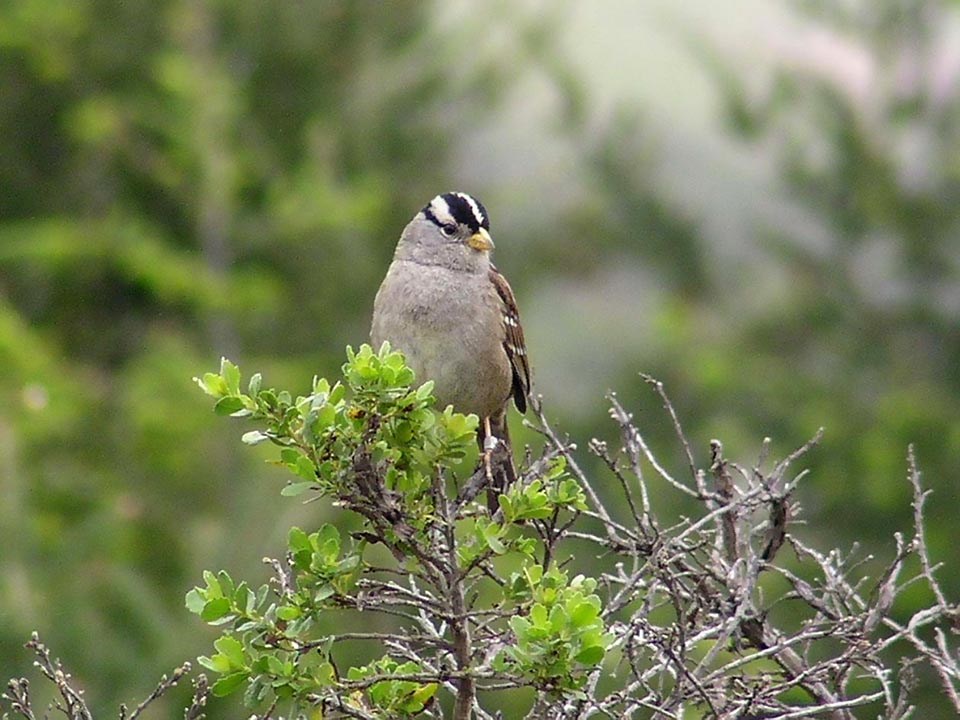Last updated: July 8, 2025
Article
Habitat Succession Effects on Nesting White-crowned Sparrows

Photo by Point Blue
April 2018 - Decades of habitat change at Point Blue’s Palomarin Field Station in Point Reyes National Seashore have seen a conversion of shrubland to dense Douglas-fir forest, as well as an 85% decline in the local white-crowned sparrow (Zonotrichia leucophrys) population. A recent paper used 30 years of data to understand how plant community changes at the site affected both the reproductive success and habitat selection of this bird species.
The authors found that the sparrows nested in vegetation that was in the earlier rather than later stages of succession, and that there was no effect of vegetation on reproductive success in the locations where the birds chose to nest.
These results suggest that the decrease in white-crowned sparrow numbers seen at this site has been due to them avoiding late-successional (i.e., Douglas-fir) habitat rather than by a decline in individual reproductive success. “There goes the neighborhood: avian nest site selection and reproductive success as local density declines” is available in full on the Point Blue website or contact eporzig@pointblue.org to learn more about this study. The public is also welcome to come see science in action through mist-netting and bird banding demonstrations at the Palomarin Field Station.
